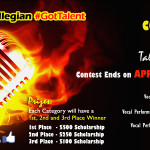By Peter A. Gudmundsson
U.S. News Money, May 25, 2018 —
Every job candidate needs to be able to explain exactly why they’re the right fit for the position.
During high school, college-bound students learn to write persuasive essays. The most important sentence in the paper is the thesis statement. A well-written thesis statement describes in clear terms what the rest of the paragraphs seeks to prove. “Jefferson’s status as a slave owner undermined his moral authority as a political philosopher” or “Opposition to the spread of communism was the most important organizing principle of post-war American foreign policy” are examples of clear thesis statements.
A job seeker applying for a pposition will likewise include a thesis of comparable clarity and will employ a strategy of proving that thesis through every interaction with the hiring manager. “Sarah will make an excellent marketing manager at X Company because she is capable, motivated and great to work with” is the job fit thesis Sarah will aim to prove in every communication.
All hiring managers ask themselves three questions when making staffing decisions.
- Can the candidate do the work? (Do they have the requisite skills, competencies, training and certifications?)
- Will they do the work? (Are they motivated, reliable, disciplined, focused, etc.?)
- Do they fit? (Will the candidates thrive in our culture?)
Thus, the task of the job seeker is to address each question with specific arguments during his or her interactions with the employer.

A clear job fit thesis indicates the writer knows herself and what she seeks to prove. (Hero Images/Getty Images)
The job fit thesis is similar to an elevator pitch in that it summarizes the key selling points of the candidate. The savvy job seeker should be prepared to address each of these questions with compelling and persuasive arguments.
Can Do the Work
To convince an employer that a candidate can do the required work, the job seeker needs to thoroughly understand how success is defined on the job. By in-depth research that includes as much industry and company insider networking possible, the prepared candidate will know the three to five skills that are most critical for success and make that case in support of her application.
For example, for an inside sales position, the candidate might mention, “I know that sales success depends on a detailed customer needs analysis. When I was a sales executive at Y Corporation, I learned how to conversationally but programmatically ask the right questions of our prospects. As a result, I led the team in contact-to-close ratios three years in a row.” Be sure to know what the position really requires and match your communications to that need.
Will Do the Work
If people always performed up to their potential or skill level, they would not need managers, organization charts or incentive systems. In practice, however, intrinsic motivation and “manageability” can be as important as skills, degrees and certifications.
Employers will test the mettle of the job seeker through the arduous nature of the hiring process. Does the candidate respond to emails and phone calls in a timely manner? Does he or she send thank-you emails? Are resumes and cover letters well-written and error-free? Does the interviewee show up on time or a bit early for a meeting?
What will references say about the candidate? Many job seekers haphazardly give names and numbers of references without properly prepping those former managers or colleagues regarding the candidate’s job fit thesis. For example, a savvy job seeker should brief a potential reference with a detailed description of the thesis so that all the data align. If a candidate seeks a warehouse supervisor job and is putting forth three key arguments for their fit – high physical stamina, great with people and detail-oriented – he needs to prepare his references on how he is presenting himself to the new employer.
Fit in the Company
The final element of the thesis is fit. The most intuitive of the three questions, it can be the most random. Fit goes beyond simple likability. Organizations with strong cultures know what they seek in a new member and, again, it is up to the candidate to understand that context and articulate her fit. Determining culture from the outside is a function of parsing the difference between stated culture and real life on the ground.
Is a given company a “work hard, play hard” wonderland or is that code for a workaholic prison? Does the candidate relish getting home at a traditional hour for dinner with the family or does the optional (but really required) happy hour attendance on Wednesday, Thursday or Friday afternoons sound appealing? As with all job search activity, self-knowledge and opportunity analysis are critical to determining fit.
In school, the difference between an A and C essay is signaled by the clarity and power of the thesis statement. A clear thesis indicates the writer knows himself and what he seeks to prove. It is the same with a job search. When plainly articulated at every step of the hiring process, the well-understood job fit thesis will determine the degree of success in finding workplace opportunity.











